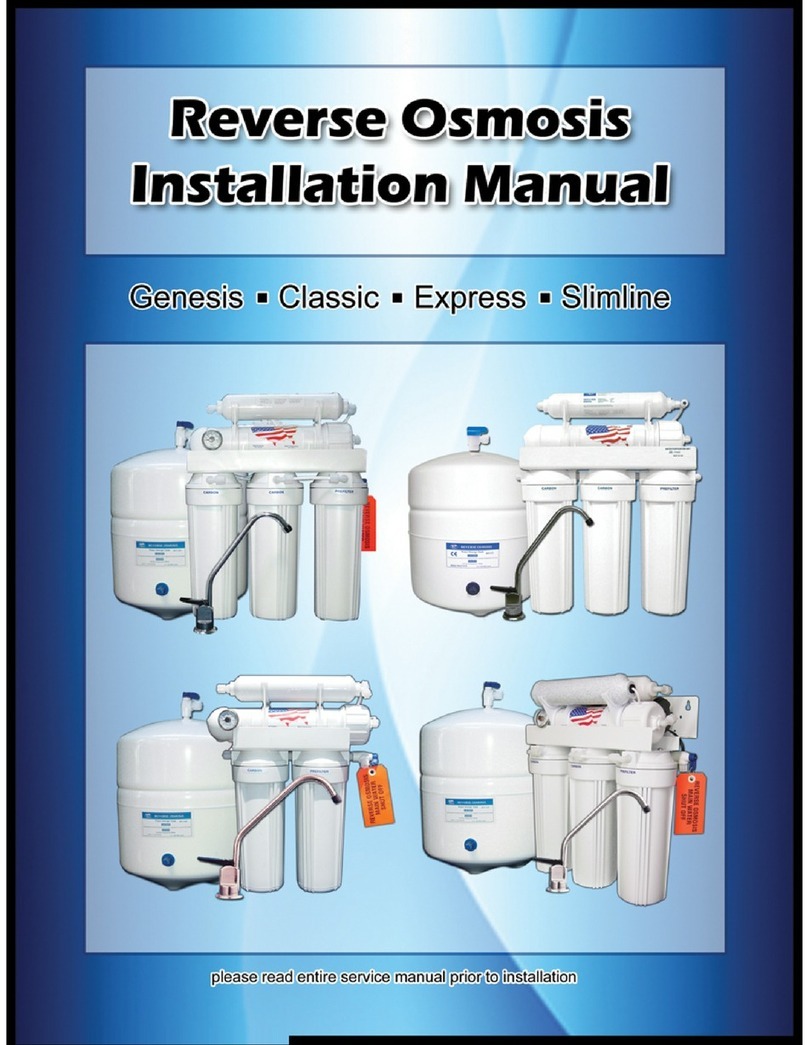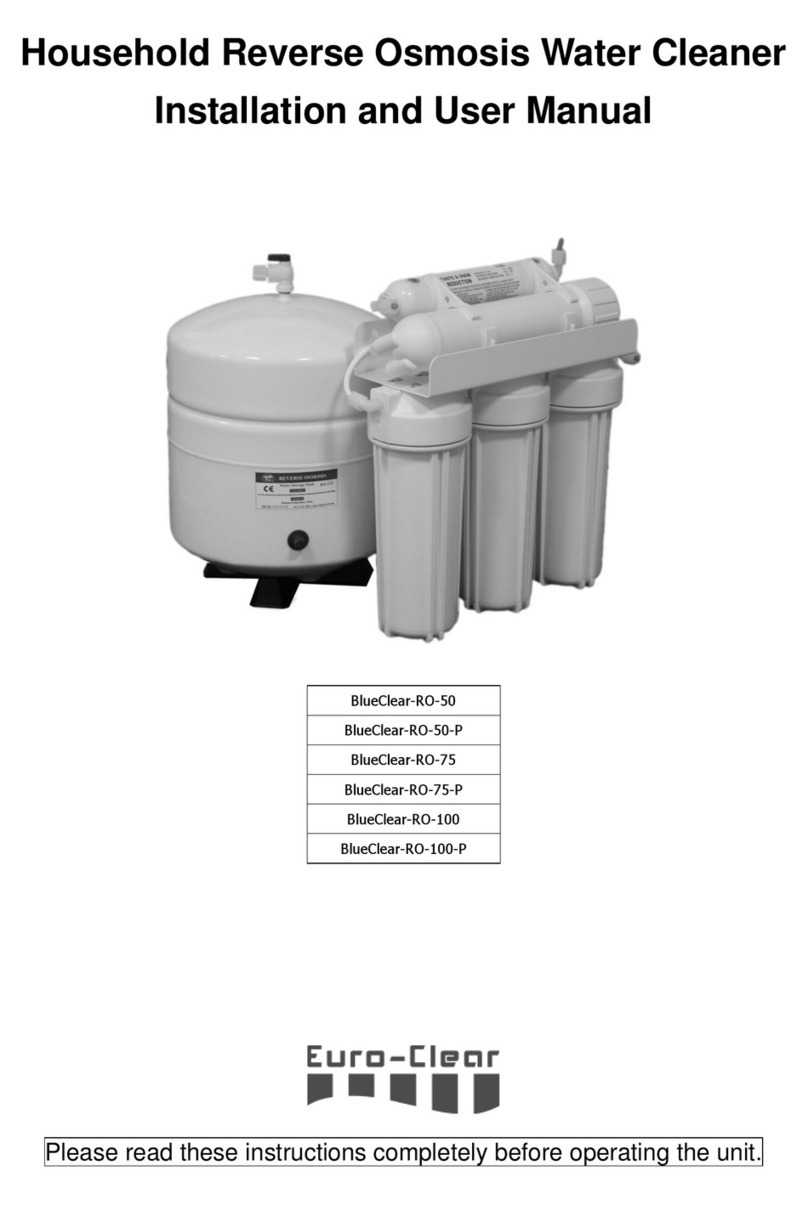
Page 9 of 12
RO-300G & RO-600G
WATER PURIFICATION SYSTEM
VIII. QUICK CONNECTORS QUICK CONNECT
The RO-RO-300G and 600G osmosis models use quick connectors
which are easy to use and provide superior performance. Proper
use is pushing the tubing into the quick connector ring to act
as an inner lock. To disconnect press the outer ring of the quick
connector and pull out the tubing.
It is recommended to make a straight cut with a Tube Cutter.
If a leak occurs, there’s a posiblity that one of the tubing is
defective or the tubing not being properly inserted all the way to
the bottom of the connector. To repare the leak relieve pressure,
release the tubing, cut at least 1/4” from the tip and reconnect.
Make sure there’s no more leaks.
Each time a new connection is made is recommended to cut 1/4” o the tip of the tubing.
If you are using conventional compression connectors due to a
maintenance situation, make sure to use the inserts at the end
of the tubing.
IX. PRECAUTIONS AND TIPS:
- Do not use where the water is microbiologically unsafe or
of unknown qualitywithout adequate disinfection before or
after the system.
- Carbon lter cartridges may contain small quantities of coal
nes, and these particles at the startup will be dragged out, so
it is recommended to purge water for a few minutes to remove
these ne particles away, always at the start up and every time
when you change cartridge as part of service maintenance.
- Do not use cellulose sediment cartridges because RO system can
be contaminated drastically with bacteria. Always use synthetic
sediment cartridges like polypropylene or polyester.
- Replacement of cartridges is limited to a life of service
approximately one year. Changes in avor, color and ow of
treated water are signals that cartridges replacement must to
be done sooner.
- The system must be protected from extreme temperatures. It is
not recommended to leave exposed to the weather due that UV
rays may cause the lter housings to become brittle and fracture.
- The supply pressure must always be taken into account and
measured before installation of the system, since the maximum
tolerance pressure of 75 PSI is referred to by the manufacturer.
For safety, we recommend installing a pressure regulator before
feeding the system when you have more than 60 PSI in the inlet
water to avoid stress in the housings.
- All installers will have to ensure lters used as replacements are
to measure and correct models. Shorter cartridges may lead to a
leakage of unltered water.
- A leak detector should be installed if your water line shows
water hammer and pressure peaks to prevent damage to the
housings that could cause water leaks and property damage.
- In addition to the lter membranes and cartridges, the overall
system components have a limited life. Depletion of these parts
often can not be easily detected. Commonly they are detected
after causing leaks or damage and as a result, is how one can
realize that life is exhausted.
- To prevent costly repairs or possible damage caused by leaks,
we recommend that all housings be replaced periodically.
Every 3 years for transparent lter housings and every four years
for opaque colors. If your system has been in use for more than
this recommended period, they should be replaced immediately.
Take the date of installation of the new housing for easy reference
for future changes.
Check and comply with your provincial / state
and local codes. You must follow these guidelines.
Use care when handling the RO system.
Do not turn upside down, drop, drag or
set on sharp pro-trusions.
The RO system works on 36 volt electrical power
only. Be sure to use only the included transformer.
Transformer must be plugged into an indoor
120 volt, grounded outlet only.
WARNING: This system is not intended for treating
water that is microbiologically unsafe or of
un-known quality without adequate disinfection
before or after the system. Contact your dealer or
distributor for disinfection treatment equipment.
Quick Connectors / Precautions and Tips
RO-300G-600G_manual.indd 9 6/28/16 3:57 PM































